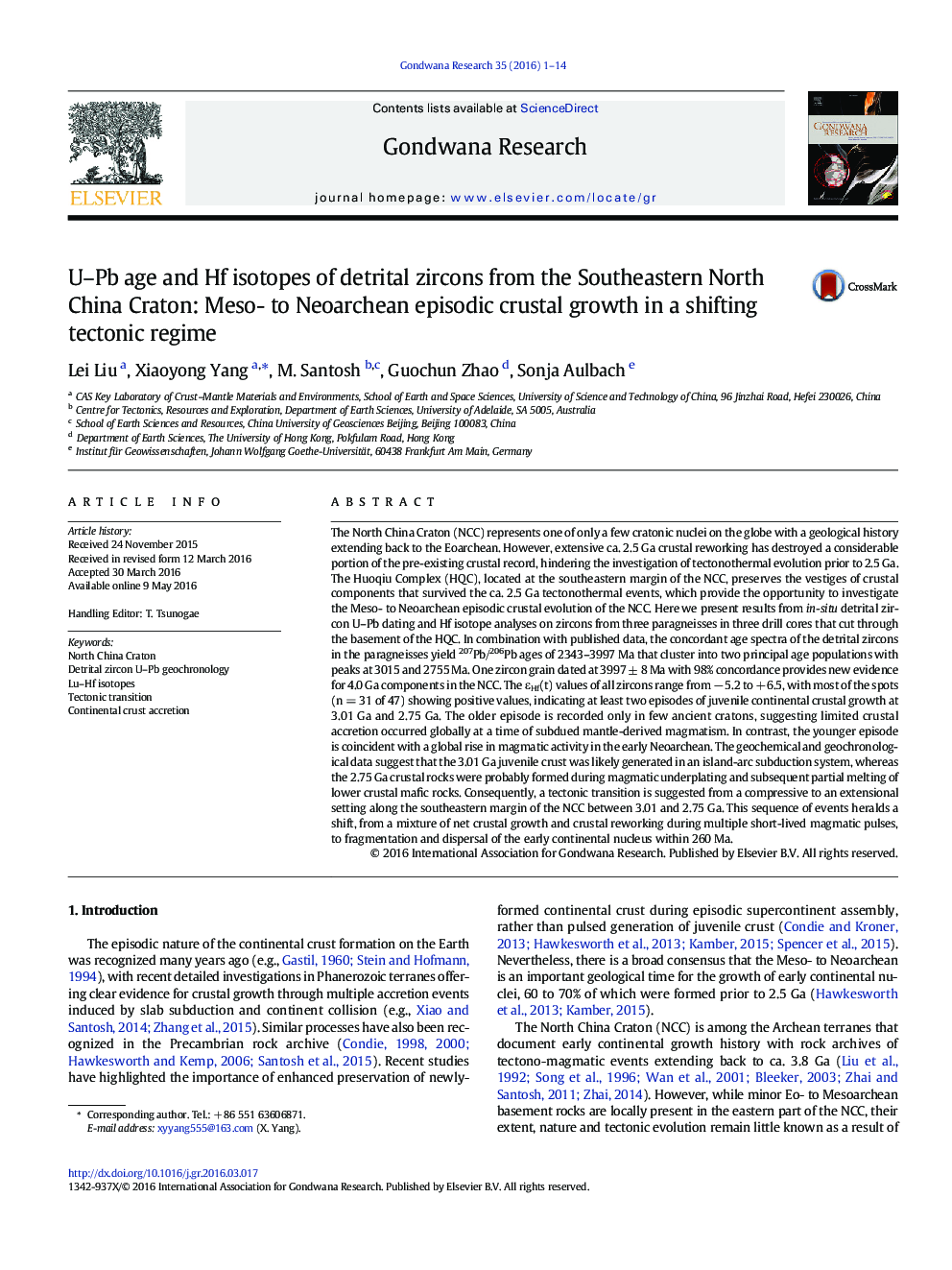| کد مقاله | کد نشریه | سال انتشار | مقاله انگلیسی | نسخه تمام متن |
|---|---|---|---|---|
| 4726584 | 1640136 | 2016 | 14 صفحه PDF | دانلود رایگان |

• New evidence for 4.0 Ga components in the NCC
• Two episodes of 3.01 Ga and 2.75 Ga crustal accretion occurred in the HQC.
• Multiple evidence for a unified Huoqiu–Qixia basement
The North China Craton (NCC) represents one of only a few cratonic nuclei on the globe with a geological history extending back to the Eoarchean. However, extensive ca. 2.5 Ga crustal reworking has destroyed a considerable portion of the pre-existing crustal record, hindering the investigation of tectonothermal evolution prior to 2.5 Ga. The Huoqiu Complex (HQC), located at the southeastern margin of the NCC, preserves the vestiges of crustal components that survived the ca. 2.5 Ga tectonothermal events, which provide the opportunity to investigate the Meso- to Neoarchean episodic crustal evolution of the NCC. Here we present results from in-situ detrital zircon U–Pb dating and Hf isotope analyses on zircons from three paragneisses in three drill cores that cut through the basement of the HQC. In combination with published data, the concordant age spectra of the detrital zircons in the paragneisses yield 207Pb/206Pb ages of 2343–3997 Ma that cluster into two principal age populations with peaks at 3015 and 2755 Ma. One zircon grain dated at 3997 ± 8 Ma with 98% concordance provides new evidence for 4.0 Ga components in the NCC. The εHf(t) values of all zircons range from − 5.2 to + 6.5, with most of the spots (n = 31 of 47) showing positive values, indicating at least two episodes of juvenile continental crustal growth at 3.01 Ga and 2.75 Ga. The older episode is recorded only in few ancient cratons, suggesting limited crustal accretion occurred globally at a time of subdued mantle-derived magmatism. In contrast, the younger episode is coincident with a global rise in magmatic activity in the early Neoarchean. The geochemical and geochronological data suggest that the 3.01 Ga juvenile crust was likely generated in an island-arc subduction system, whereas the 2.75 Ga crustal rocks were probably formed during magmatic underplating and subsequent partial melting of lower crustal mafic rocks. Consequently, a tectonic transition is suggested from a compressive to an extensional setting along the southeastern margin of the NCC between 3.01 and 2.75 Ga. This sequence of events heralds a shift, from a mixture of net crustal growth and crustal reworking during multiple short-lived magmatic pulses, to fragmentation and dispersal of the early continental nucleus within 260 Ma.
Figure optionsDownload as PowerPoint slide
Journal: Gondwana Research - Volume 35, July 2016, Pages 1–14